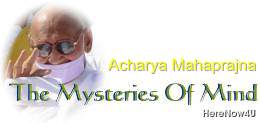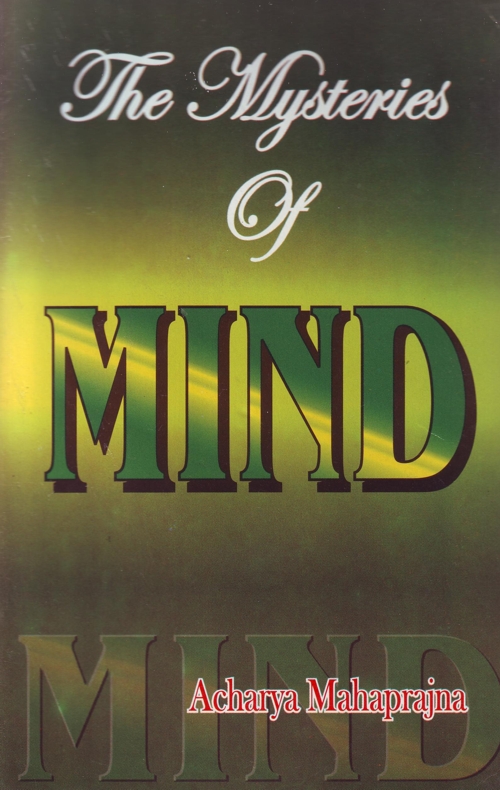
There are vibrations caused by external agencies. Prana vibrations and karma vibrations are externally produced vibrations. There are several other causes of these vibrations. One of them is thinking. Memory also produces vibrations. Let me tell you an anecdote.
Once four persons came to see an old lady. She offered to them butter milk. After sometime the men departed. When the lady saw in the churning pot to her great surprise, she found a dead snake in it. She thought that the guests might have been poisoned and died. After a few months the same guests again visited the old lady. She was surprised to see them alive. She spoke to them about the dead serpent in the churning pot. On hearing this the memory cells of all the visitors became active. They felt as if they were drinking poisoned buttermilk and died of fear. It was not poison but memory, which killed them.
Thinking, memory and imagination produce vibrations. Some of them are pleasant and others unpleasant. Cults of devotion and recitation of charms (mantras) had been based on the theory of vibrations. People believed that a particular kind of sound was capable of producing a certain kind of vibrations. In recitational exercises formulas are recited loudly in order to produce a certain kind of vibrations. Mauna Japa (silent recitation), prana japa (contemplation on vital energy and a very subtle recitation of a formula together with it) or repetition of the rhythm of vital energy are attempts to produce vibrations, gross as well as subtle. The theory behind the recitation of magical charms is the theory of vibrations. The makers of these charms knew what kind of charm will produce what kind of vibrations. The structure of the mantra sastra (discipline of magical charms) came to be developed on this theory. Hundreds of books came to be (written on the discipline of mantra sastra). Magical charmscartae are to be prescribed as curatives of various physical and psychical ailments. A system of magical treatment of diseases came to be built up. Magical charms were believed to be efficacious in increasing the energy of the body. Charms, it was believed, could bring about monetary gains. There were preventive charms, which could ward off future calamities, produce joy and destroy grief. Sound produced vibrations, which in their turn could change the course of natural events. Different kinds of experiences also produced vibrations. Even meditation produces vibrations.
There were as many samvaras (measures to be adopted in stopping the influx of the effects of actions) as there were asravas (influxes). There were different kinds of bondage and appropriate methods of release from them. There were as many medicines as there were diseases. There were various kinds of agencies to produce various kinds of vibrations. That is why different devotional cults, faiths and ideologies of knowledge and action came into vogue in India. Whatever path one might have adopted, his only aim was to produce vibrations capable of destroying unfavourable vibrations.
When these vibrations came to be properly investigated into, it resulted in the formulation and development of all kinds of theories. One of them was the theory of opposites. According to this theory vibrations could be stopped by producing an opposite kind of vibration. Bhavana is one of the means of producing vibrations and of entering into subtle experiences. Much could be achieved by producing counter vibrations. For example, the opposite of anger is calm, that of pride is humility, that of deceit is simplicity and that of greed is contentment. We can put an end to one kind of vibrations by producing counter-vibrations.
It is quite pertinent to ask as to why we should eat in order to satisfy hunger when the vibrations of hunger could be subdued by counter-vibrations. This seems to be quite natural and logical. Bhavana may also play the same role in relieving us of hunger. It should, however, be remembered that the theory of counter-vibrations is applicable on the level of consciousness only. Bhavana is not applicable to the body but to the realm of psychology only. Some vibrations affect the body or pudgala only while some have only a psychological application. For example, vibrations caused by delusion are concerned only with consciousness. Vibrations of karma, which produce auspicious as well as inauspicious feeling, affect pudgala only. Hunger cannot be quenched by producing counter-vibrations, but delusion can be removed.
The theory of counter-vibrations came to be developed in the field of spiritual practice. Practitioners are called upon to perceive and know the presence and ripening of vibrations which will result in the production of counter-vibrations which in their turn will subdue former vibrations of despondency, hatred, grief, anger etc.
Vibrations connected with all kinds of craving are sex-vibrations. They can be subdued by counter-vibrations. Some vibrations are connected with the enjoyment of external objects while others are connected with internal or spiritual joy. Electrical energy, which resides in the brain, produces sex-vibrations when it begins to flow downwards. The vibrations give us comfort, which is received, not from physical objects but from the vibrations themselves. These vibrations can also be produced artificially without affecting their quality.
Energy, which flows downwards towards the sex-centres, produces sex-vibrations, which give comfort. In order to produce counter-vibrations to oppose them, we will have to carry the descending energy upwards. This needs a lot of restraint. Electricity, which resides in the brain, is positive energy whereas electricity, which resides in the sex-centres, is negative. When vital energy begins to flow into the sahasrara cakra, it will produce vibrations congenial to the self. It will make us feel a joy we had never before experienced. As compared with this joy, pleasures born of sex-vibrations are very insignificant. One who has risen to the level of spiritual experience will never wish to relinquish it. He will remain self-absorbed for hours and hours together and will not feel dejected even when the state of spiritual experience comes to an end. On the other hand he will feel much more exhilarated and stronger.
People have often asked what joy is. Joy implies the fusion of positive and negative energy. Spiritual joy is the product of the fusion of the positive energy of the brain and the negative energy of the sex-centres. This fusion produces strange vibrations.
 Acharya Mahaprajna
Acharya Mahaprajna

